
If your network connection stopped working suddenly and you see the message from diagnostic: “Your computer appears to be correctly configured, but the device or resource (DNS server) is not responding”, don’t panic.
While this error may seem daunting, with a little know-how, you can tackle it head-on. This guide will explore the causes behind this issue and walk you through how to fix it, step by step.
Fixes to try:
You may not have to try them all; just work your way down the list until you find the one that does the trick for you.
Fix 1: Check your network connection
There are many causes that can cause connection issues – problems with the website server, your computer, router, modem, or your ISP. The first step is to narrow down the source of the problem and try to identify whether the problem is on your end or your ISP’s.
Try connecting your phone, tablet, or another computer to the same network and see if the network works fine on other devices. If you can’t connect to the network on any device, then it’s probably an issue on your ISP’s end and you can contact your ISP for assistance.
If your network works on every other device, then the issue is probably with your computer. Read on and try the fix below.
Fix 2: Restart your PC and network devices
Sometimes, the DNS error is only a temporary problem with the router, modem, or PC.
So before we dive into anything advanced, try turning off your PC and network devices, wait for at least 30 seconds to cool them off, and then turn your devices back on.
This will refresh the Internet connection, and, hopefully, fix the glitch for you.
Fix 3: Change the DNS server
Your device will automatically grab a DNS server from your ISP if you don’t add one manually. And if there are any issues with your provider’s server, you might get the DNS server not responding message.
If this is the problem for you, follow the instructions below to switch your DNS server to a public one instead (we recommend Google’s here):
- On your taskbar, right-click the network icon, then click Open Network & Internet settings.
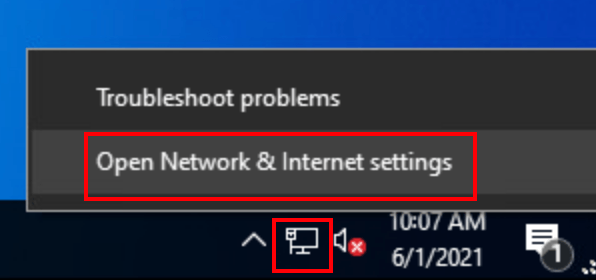
- Click Change adapter options.
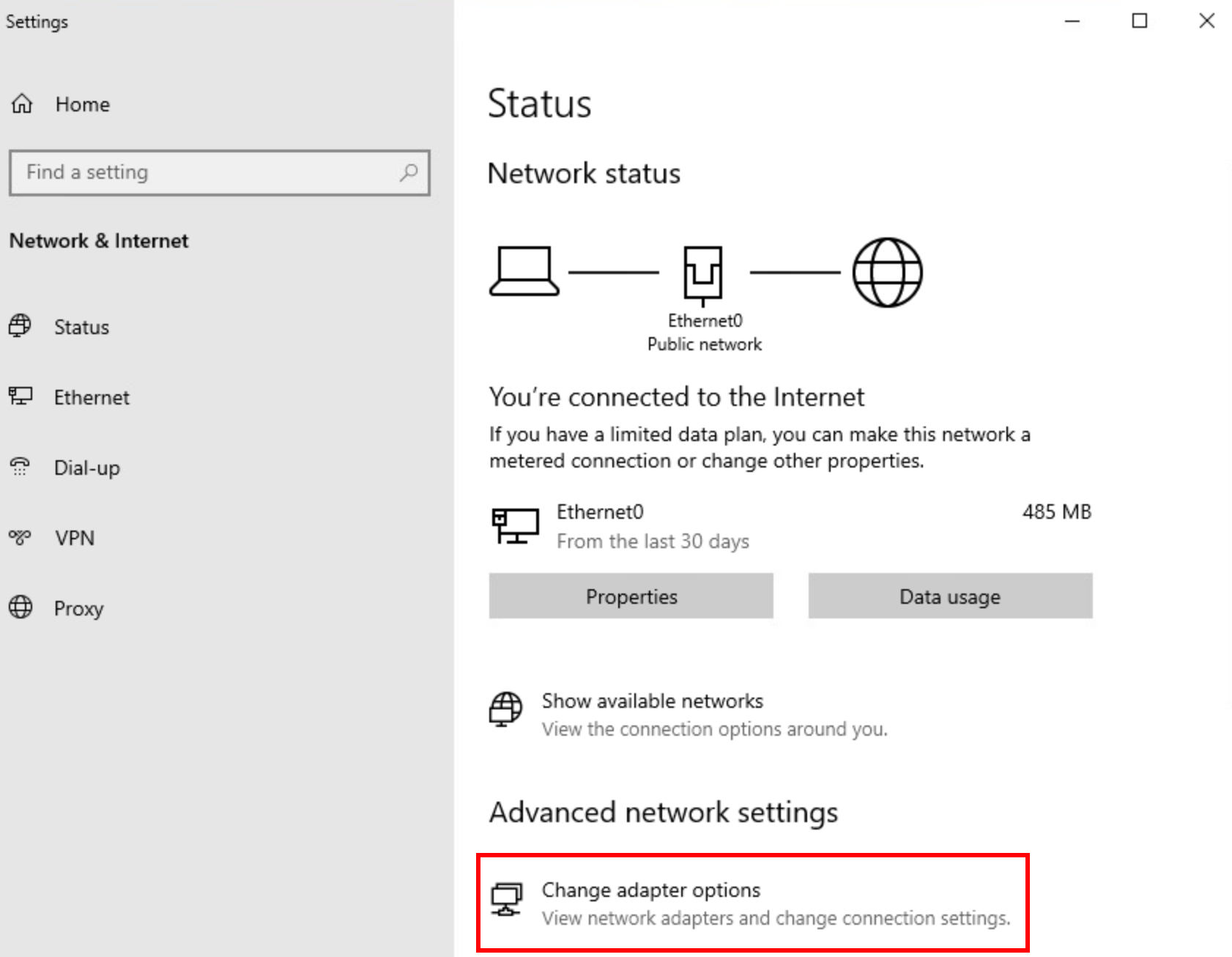
- Right-click the network you’re using, then click Properties.
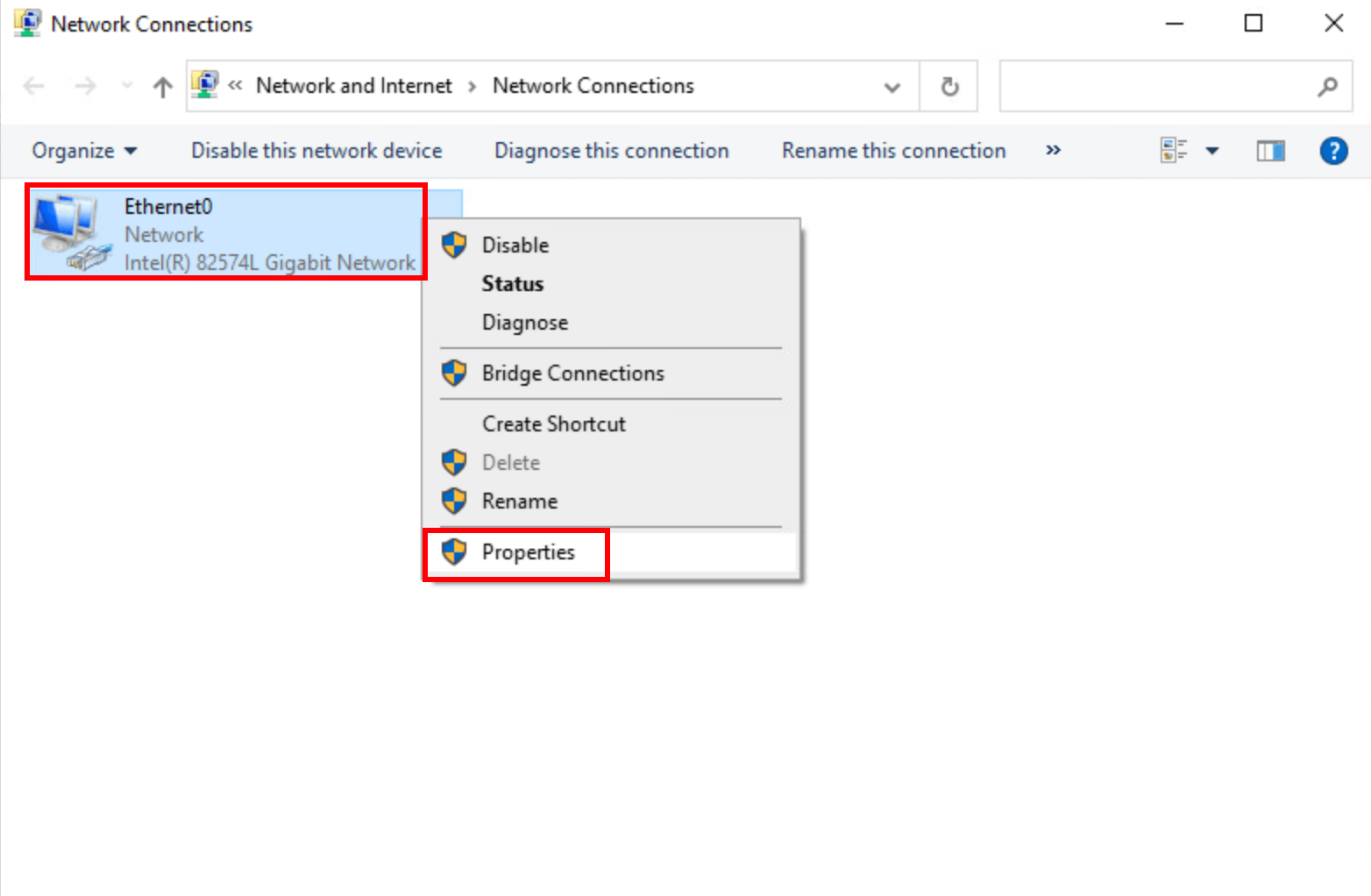
- Select Internet Protocol Version 4 (TCP/IPv4), then click Properties.
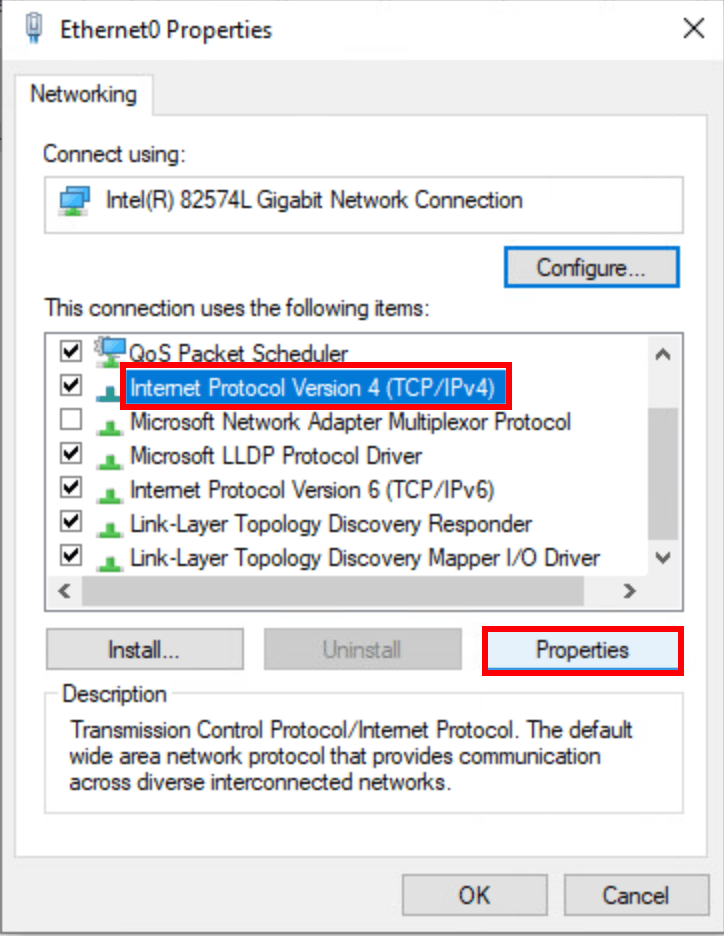
- Select Use the following DNS server addresses, fill in the Google DNS server addresses as below, then click OK.
Preferred DNS server: 8.8.8.8
Alternate DNS server: 8.8.4.4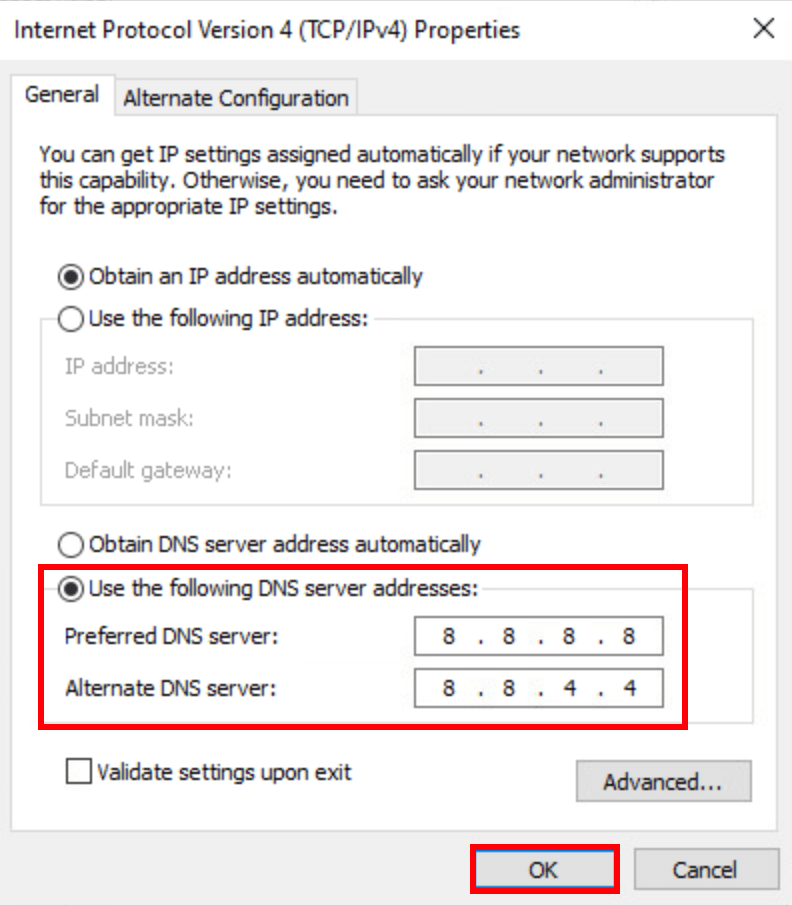
Try visiting a webpage to test your network status. If the issue persists, try the fix below.
Fix 4: Update your network adapter driver
Network problems are likely to occur when you’re using the wrong or outdated network adapter driver. To keep your network devices working flawlessly with your PC, it’s essential that you have the latest correct driver at all times.
There are two ways you can update your network adapter driver:
Option 1 – Download and install the driver manually
The manufacturer of your network adapter keeps updating the driver for your device. To get the latest driver, you need to go to the manufacturer’s website, find the driver corresponding with your specific flavor of Windows version (for example, Windows 32-bit) and download the driver manually.
Once you’ve downloaded the correct driver for your system, double-click on the downloaded file and follow the on-screen instructions to install the driver.
Option 2 – Automatically update your driver
If you don’t have the time, patience or computer skills to reinstall your driver manually, you can do it automatically with Driver Easy.
Driver Easy will automatically recognize your system and find the correct drivers for it. You don’t need to know exactly what system your computer is running, you don’t need to risk downloading and installing the wrong driver, and you don’t need to worry about making a mistake when installing.
- Download and install Driver Easy.
- Run Driver Easy and click the Scan Now button. Driver Easy will then scan your computer and detect any problem drivers.
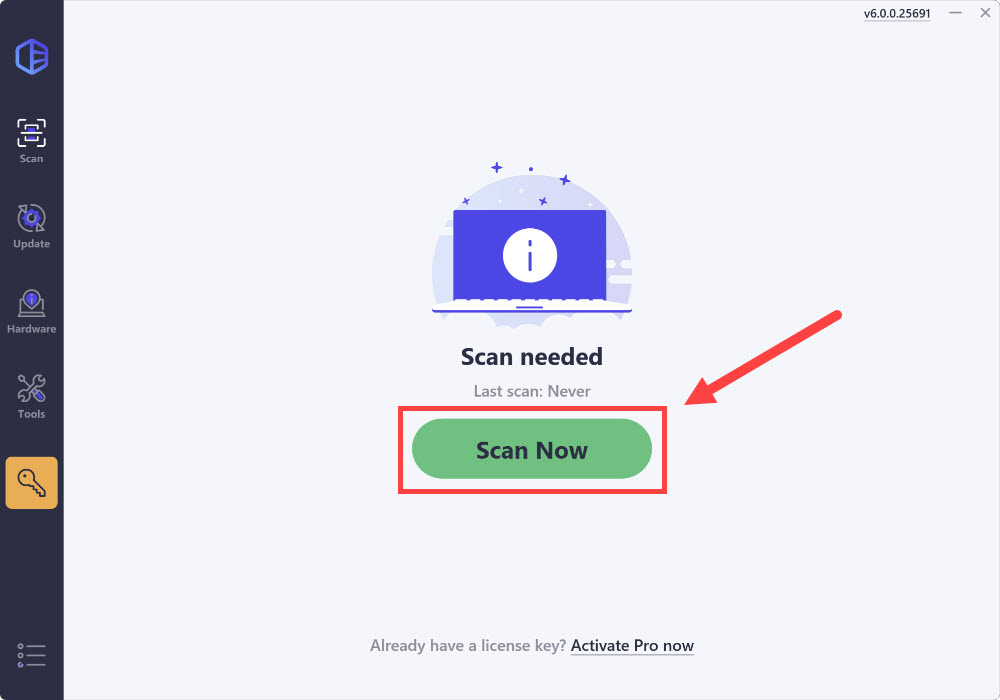
- Click Update All to automatically download and install the correct version of all the drivers that are missing or out of date on your system.
(This requires the Pro version which comes with full support and a 30-day money-back guarantee. You’ll be prompted to upgrade when you click Update All. If you’re not ready to buy the Pro version, Driver Easy offers a 7-day free trial which includes access to all the Pro features such as high-speed download and one-click install. You won’t be charged anything until your 7-day trial has ended.)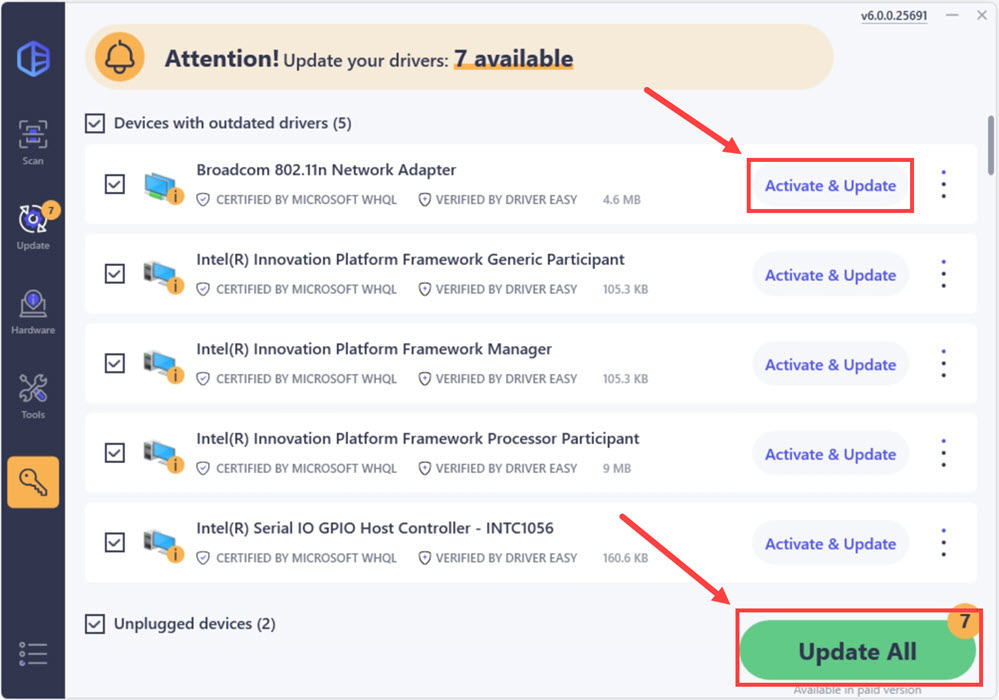
- Restart your computer for the changes to take effect.
If not, move on to the next fix below.
Fix 5: Flush the DNS cache
A DNS cache allows you to access sites you’ve already visited faster without having to wait for a DNS lookup every time you visit the site. Unfortunately, if the cache gets corrupted, it can cause problems.
To see if this is the cause of your issue, try clearing your DNS cache:
- On your keyboard, press the Windows logo key and type cmd. Then right-click on Command Prompt and select Run as administrator.
Note: Click Yes when prompted by the User Account Control.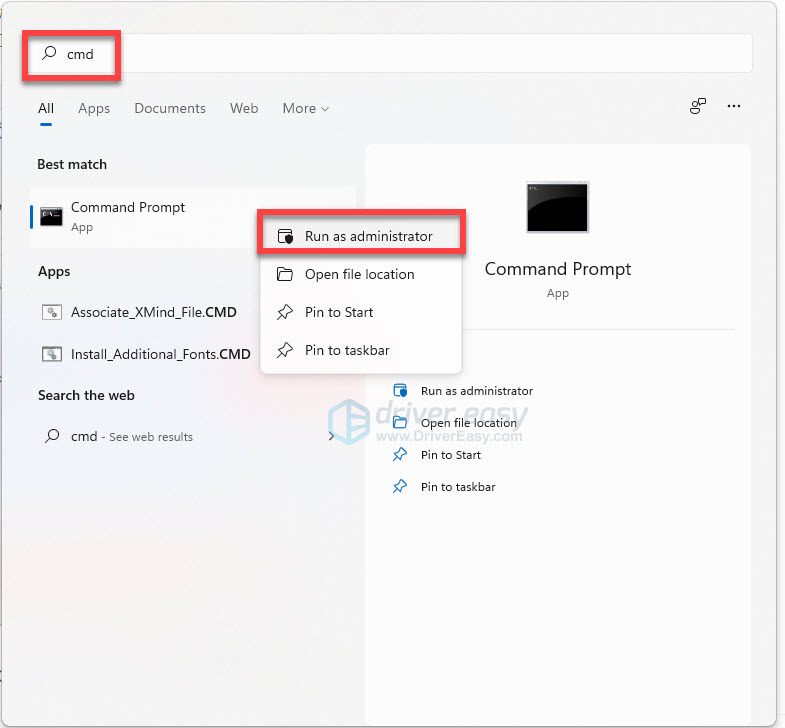
- Type the following commands and press Enter after each.
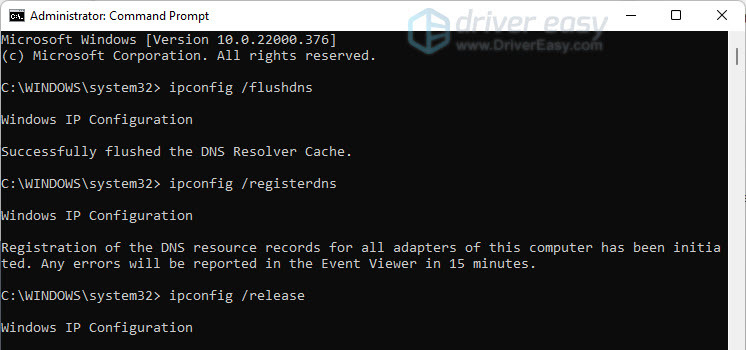
ipconfig /flushdns
ipconfig /registerdns
ipconfig /release
ipconfig /renew
Try connecting to a webpage to test your issue. If the issue persists, proceed to the fix below.
Fix 6: Disable your antivirus temporarily
DNS Server Not Responding errors can be caused by interference from antivirus software. To see if that’s the problem for you, temporarily disable your antivirus program and check if the problem persists. (Consult your antivirus documentation for instructions on disabling it.)
If the connection issue get fixed after you disable the antivirus software, contact the vendor of your antivirus software and ask them for advice, or install a different antivirus solution.
Hopefully, this post helped. Feel free to leave a comment below if you have any questions or suggestions.





